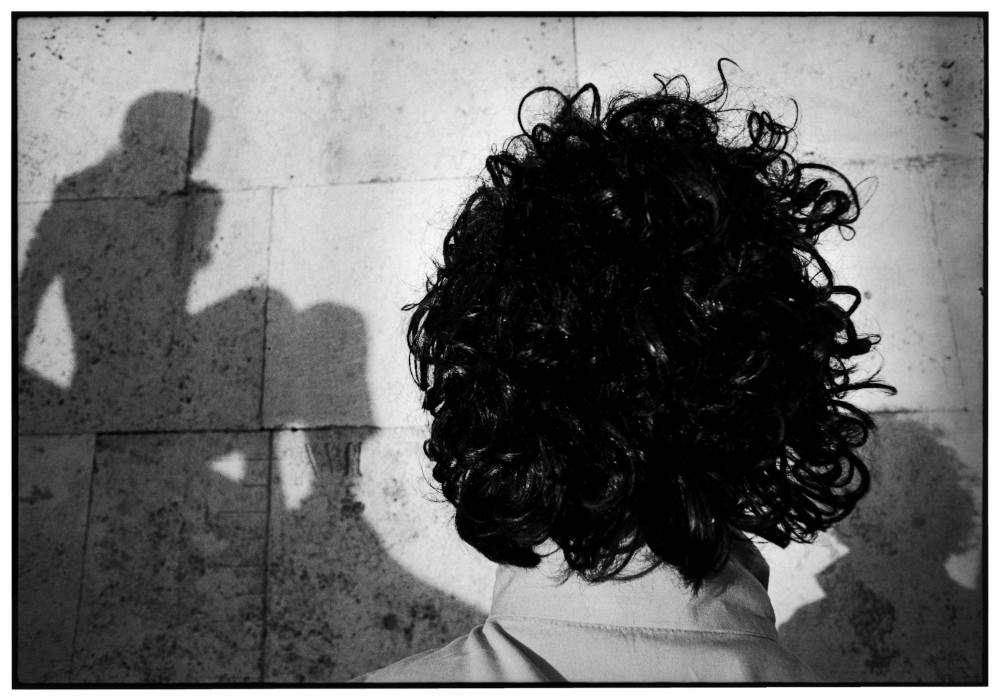Ugo Mulas portrays Pino Pascali. A photography exhibition at the Polignano a Mare Foundation.
From July 15 to October 2, 2022, the Fondazione Museo Pino Pascali in Polignano a Mare presents the exhibition Dialogues. Pino Pascali and Ugo Mulas, curated by Alessio de’Navasques in collaboration with theUgo Mulas Archive and with the scientific coordination of Rosalba Branà.
Forty-one black-and-white images, rare vintage prints, little-known series or series that have never been exhibited in their entirety will be exhibited in order to trace a cross-section of encounters and crossed destinies between the Milanese photographer and the Apulian artist, in an unprecedented narrative that intends to realign and stitch together the relationships between art, fashion and publishing, through the pioneering experience of L’Uomo Vogue.
It was the latter publication that commissioned Mulas to take the portraits he shot of Pascali in Rome in 1968. Those photos codify the myth of Pascali in anew and seductive iconography and constitute the incipit to the first part of the exhibition itinerary, in which the story is reconstructed, placing it as a peculiar experience within Mulas’ portraiture dedicated to artists, following the declination of fashion photography. In the dilated time of the photograms, Pascali moves, rolls, and interacts with his work Cavalletto, at times staging a performance. In this sequence, exhibited for the first time in its entirety, Mulas captures the characteristic traits of Pascali’s personality: the ironic verve, the nonconformism, the profound intention in the search for the gesture and the relationship with the work.
In the late 1960s and early 1970s, the magazine, under the artistic direction of Flavio Lucchini, is a space for experimentation and research. Fashion is the medium that gives form and expression to freer representation of the masculine, giving space to new codes, opening up new possibilities in men’s clothing, which in those years frees itself from the formality of the traditional suit to wear, nonchalantly, furs, Korean-style jackets, outerwear of military origin. To portray this epochal social change, no professional models were chosen, but artists, singers, known and unknown actors, filmmakers, creative people of all kinds.
The exhibition brings to light the little-known history of this experience in the international editorial scene, reconstructing for the first time through all the images, two of Mulas’s most beautiful editorials published in the very first issues of the magazine, the one with the artists in fur of 1967 and Seven plus seven artists of today their works their clothes of 1969. Prominent figures in the cultural scene of those years posed for these series: from Lucio Fontana to Ettore Sottsass, Alighiero Boetti, Aldo Mondino, Tommaso Trini, Getulio Alviani and many others. On this occasion Mulas shoots the most iconic of portraits of Giangiacomo Feltrinelli, among the patrons of Bar Giamaica who appears, elegant and dandy, in astrakhan and colbac. In the 1969 editorial, an image of Pascali taken in Rome the previous year will be published posthumously: all dressed in black, with sandals and a scarf around his neck, faithful to his “uniform” as an artist wearing Porta Portese clothes.
From the same period as the portraits in the studio are the photos of Pascali with his partner Michelle Coudray on the Lungotevere, in which Mulas eternally fixes, in the dazzling backlight, the myth of youth, along with the spontaneity and joie de vivre of the couple’s gestures. The shot with Pascali from behind is another well-known image of the artist, which also appears reproduced in Carla Lonzi’s famous book Autoritratto. The exhibition succeeds in contextualizing this photograph, reconstructing the entire sequence of that day.
The second part of the exhibition reconstructs the encounters between the two, over the course of a few months, before the artist’s untimely death in a tragic accident in September 1968.
In Venice, during the 1968 Biennale, Mulas is present to produce a reportage dedicated to the event: the Biennale is for the photographer a kind of grand theater, a seamless happening that poses questions of duration, problems of composition, of rendering movement, where the eye of the photographic lens is the instrument of total understanding, the gaze that unites, in an instant, the genres of chronicle and portrait.
The last encounter is posthumous, with the works alone, again in Rome, on the occasion of the exhibition Vitalità del Negativo, curated by Achille Bonito Oliva at the Palazzo delle Esposizioni in 1970. Here Mulas’ lens documents the 32 square meters or so of sea, capturing its iconic presence in a series of seven images, also exhibited in its entirety for the first time.
Image: Pino Pascali, Rome 1968 Photographs Ugo Mulas. Credit Eredi Ugo Mulas. Courtesy of the Ugo Mulas Archive - Lia Rumma Gallery.
 |
| Ugo Mulas portrays Pino Pascali. A photography exhibition at the Polignano a Mare Foundation. |
Warning: the translation into English of the original Italian article was created using automatic tools. We undertake to review all articles, but we do not guarantee the total absence of inaccuracies in the translation due to the program. You can find the original by clicking on the ITA button. If you find any mistake,please contact us.




























